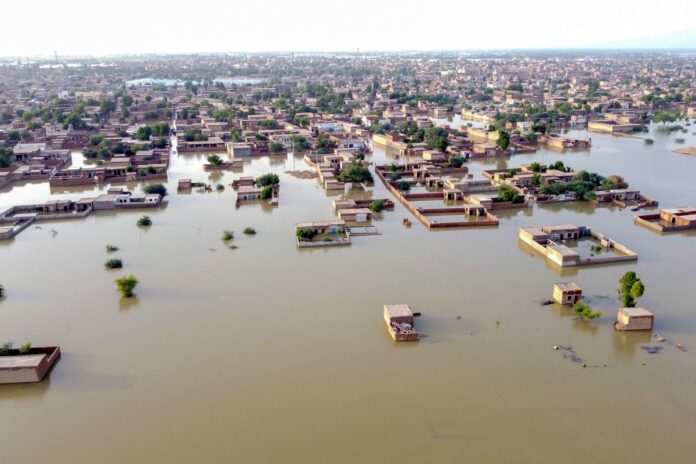After at least a decade, Pakistan has witnessed a record rainfall this summer. Most of the land in south Pakistan has turned into swamps due to the flood water of the Indus river. Almost a million homes sustained this jerk, but 5500 bridges and roads have been damaged since June. The death toll reached 11650, and 3500 were injured between June and august.
According to the government, more than 13 million people have been affected, constituting 13 percent of the total population.
Most heavy rain is associated with the moon. Moonsoon, a seasonal wind pattern, brings precipitated wind to south Asia. It is also a source of rainwater which carries 65 percent of the annual water in Pakistan. Antonio Guterres said the exceptional rainfall had become monsoon on steroids.
Pakistan has received 190 percent of its average annual rainfall this year compared to the previous rain. Monsoon had downpours 26 percent in July since 1961. overall, This year’s deluge has brought tremendous surges and flooding.
Two provinces, Baluchistan and Sindh, have witnessed a lot of rain, which has damaged the region that comes in its way. Balochistan has received 460 percent rainwater, whereas Sindh has acquired 430 percent of rainwater. Other areas of the country have also received more rainfall than in previous years.
Bushra Khalid, a research scientist at the Institute of Geographic Sciences and Natural Resources Research, told the Washington Post in an email that The season has not ended yet, and the total number of rainy days has already almost doubled for several cities.
Unusual monsoon system
When the air becomes lighter due to heat in the Tibet terrain, it rises above and creates space for the moist air in the Arbain sea and bay of Bengal to take its place.
Summer moon spoon has two entering points in Pakistan explained by Muhammad Fahim khokhar, a researcher at the National University of Sciences and Technology in Islamabad.
First, after traveling the foothills of the Himalayas, the southwesterly winds of the Bay of Bengal enter Pakistan and bring the monsoon rain to the districts of Sialkot, Jhelum, Islamabad, and Lahore.
The second pathway brings rainfall to the southeastern region of Pakistan from southwest winds entering Pakistan from the Arabian Sea. A large part of Balouchistan usually remains unaffected. Still, it received significant rainfall this year and has suffered a lot, for the authority has not planned to tackle this unprecedented calamity.
The temperature has risen by 0.18 degrees each year over the monsoon belt of Pakistan since 2010. khokhar said warmer air could bring more moisture, leading to more severe rainfall and subsequent rainfall.
Conclusion
Pakistan must make its new development plan incorporating all types of natural disasters, community resilience, and sustainability. Many funds raising activities have started working to help the victims in these turbulent times. However, the whole nation is standing firm to let this catcall face together.













